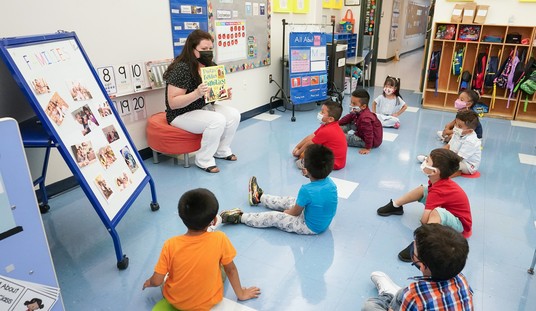More than 200 organizations across the country are staging some 3,600 events to mark this year’s School Choice Week. But many grateful parents have reason to celebrate every week.
Just ask Joseph Kelley. A single father living in Washington, D.C., Kelley was shocked when his son Rashawn failed the first grade. Worse, his teachers didn’t even realize that he knew how to read. But rather than work to improve his vocabulary and get him up to grade level, the D.C. Public School System placed Rashawn in special-education classes.
Kelley knew his son was smart but wasn’t being well-served by his assigned public school. He heard about the D.C. Opportunity Scholarship Program, which provides vouchers to low-income children in the nation’s capitol to attend a private school of choice, and he knew what it meant: a second chance for his son.
Rashawn applied and was enrolled in the program. After two years in his new private school, he caught back up to grade level. Today Rashawn is in college, attending the University of the District of Columbia. That wouldn’t have been possible if 1) he didn’t have a parent who cared, and 2) he didn’t have a school-choice option available to him.
It’s not hard to find the first part of the formula. There are plenty of parents who care about their children’s education. It’s the second part that’s tricky. School choice remains beyond the reach of far too many other children just like Rashawn: smart, but ill-served by a broken system.
We’re now spending an average of nearly $11,000 per student, a record amount. Yet test scores and other measurements of academic achievement continue to lag behind.
Recommended
Yes, there are many good public schools nationwide, with dedicated teachers who deserve praise. Unfortunately, far too many students are languishing in bad schools. And when you consider the damage they inflict, making it nearly impossible for students to learn and fulfill their potential -- you wonder why anyone would settle for such a deplorable status quo.
But that’s been changing in recent years. Support for school choice is at an all-time high, in fact. Forty-four percent of Americans favor allowing students to choose a private school to attend at public expense. School choice favorability has jumped 10 percentage points since last year.
Today, 17 states and Washington, D.C., have some form of school choice. Some states provide school choice through scholarships, or vouchers, which go directly to students to be used at a school of the family’s choice. Other states provide tax credits to individuals or corporations that contribute money toward scholarships. Some states provide both types of programs.
Education savings accounts -- currently available only in Arizona -- are a particularly innovative approach to school choice, allowing families of special needs children to use a portion of the dollars that would have been spent on their children in their assigned public schools for a variety of other education options, including private-school tuition, online education, and special-education services.
The benefits are undeniable. For one thing, students in school-choice programs are more likely to finish school. For example, students who spend all four years of high school in the Milwaukee Parental Choice Program, the nation’s longest running school-choice program, had a 94 percent graduation rate. Their peers who attended four years of public high school had a 75 percent graduation rate.
School-choice students also tend to do better academically. A comprehensive study by the Foundation for Educational Choice notes that nine out of 10 empirical studies using random assignment to assess vouchers found that they improve student outcomes. (The 10th one found no impact.)
With school choice on the march, we have good reason to believe that the status quo in education won’t remain the status quo much longer. The trend is flowing away from government control -- and toward parental control.
In nearly every area of life, from iPads to insurance, Americans can decide what works best for them. Why shouldn’t the same principle apply to something as important as our children’s education?

























Join the conversation as a VIP Member